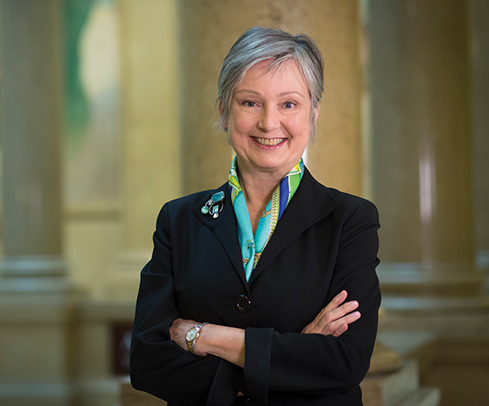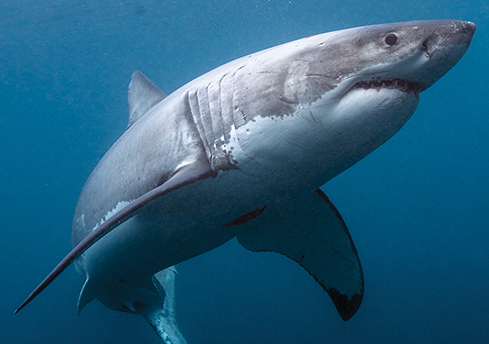 Summer 2014
Summer 2014
Hail to the (new) chief—Jo Ellen Parker On April 29, Carnegie Museums of Pittsburgh’s board of trustees announced its pick to be the organization’s 10th president: Jo Ellen Parker, president of Sweet Briar College, a liberal arts college for women in central Virginia. Parker has made quite a mark in higher education, earning a reputation as a seasoned collaborator and thoughtful leader. Before joining Sweet Briar in 2009, she was executive director of the National Institute for Technology in Liberal Education, a non-profit that works with 150 liberal arts colleges in the United States and abroad to advance undergraduate education in the digital age. Before that, she was president of the Great Lakes Colleges Association, a consortium of 13 private liberal arts colleges. “Jo Ellen immediately stood out to us as a visionary, an advocate for the transformational power of education at all levels, and a leader whose pathway to success is always collaboration,” says Lee Foster, chair of the Carnegie Museums board of trustees. She’ll officially succeed current Carnegie Museums President David Hillenbrand on August 18. The Kansas native relishes her return to Pennsylvania, where she’s spent much of her life. Earlier in her career, Parker served her alma mater, Bryn Mawr College, as a faculty member and school administrator, and taught in the English department at Swarthmore College. She earned her A.B. in English from Bryn Mawr, her M.A. in English from the University of Kansas, and her Ph.D. in English Literature from the University of Pennsylvania. “I’m so honored to have the opportunity to work with these four wonderful museums, where the public meets the liberal arts and sciences,” Parker says. “Each is in itself a treasure, and together they’re an unparalleled resource. Helping to strengthen each of them and extend their reach by supporting their collaborative efforts is intellectually exciting to me. And to do that in a city that so obviously loves and embraces its cultural organizations is all the more appealing.”
Members: Ready, Set, Adventure!
Sizing up race
“Incomplete though it is,” wrote Don Drago, a former museum assistant field archaeologist, shortly after the show’s opening, “we hope that all who see this exhibit will in the future stop to think before they give way to prejudice against their fellow man.” A sentiment shared today, 60 years later.
Unveiling the "Chicken from Hell" Recognize this beast? This bizarre, bird-like dinosaur from the Museum of Natural History’s Dinosaurs in Their Time exhibition became an international sensation this past spring thanks to the museum’s chief dinosaur hunter, Matt Lamanna, and team. It was all due to the animal’s fascinating backstory, strange appearance, and really cool nickname, revealed in March by Lamanna and fellow paleontologists from the Smithsonian’s National Museum of Natural History and the University of Utah. The foursome had spent years studying three sets of fragile fossils that together make up nearly the whole skeleton of a new species of oviraptorosaur, affectionately dubbed the “chicken from hell.” “We finally have the fossils to show what these creatures looked like from virtually head to toe,” Lamanna says of the 11-foot-long, nearly 7-foot-tall creature that lived roughly 66 million years ago in North and South Dakota alongside its more famous contemporaries, Tyrannosaurus rex and Triceratops. “And in almost every way, they’re even weirder than we imagined. They probably did look like giant, really freaky chickens.” Its official name is Anzu wyliei— “Anzu” referring to a feathered demon in ancient Mesopotamian mythology, and “wyliei” honoring Wylie J. Tuttle, grandson of Lee Foster, chair of Carnegie Museums’ board of trustees and a longtime supporter of the museum’s scientific research. According to Lamanna, Anzu likely dined on a “Cretaceous smorgasbord” that included vegetation, insects, tiny lizards and mammals, and possibly eggs. This flexibility in diet may explain why the feathered but flightless beasts were so diverse and successful. “They were the Swiss Army knife of the Cretaceous,” he says.
6 Million Years That’s the age of the earliest known fossils found of the great white shark. Opening June 13 in the Science Center’s Rangos Omnimax Theater, Great White Shark explores this prehistoric predator—the misrepresented, maligned, and misunderstood creature we all love to fear!
|
Andy Warhol, Revealed · Rockhound · Picture This · Small Prints, Big Artists · Special Section: A Tribute to Our Donors · Director's Note · Face Time: Catherine Evans · About Town: A Legacy of Science · Artistic License: Home-field Advantage · Science & Nature: Big Blue · The Big Picture
 |
Copyright © 2017 CARNEGIE Magazine. All rights reserved. |





